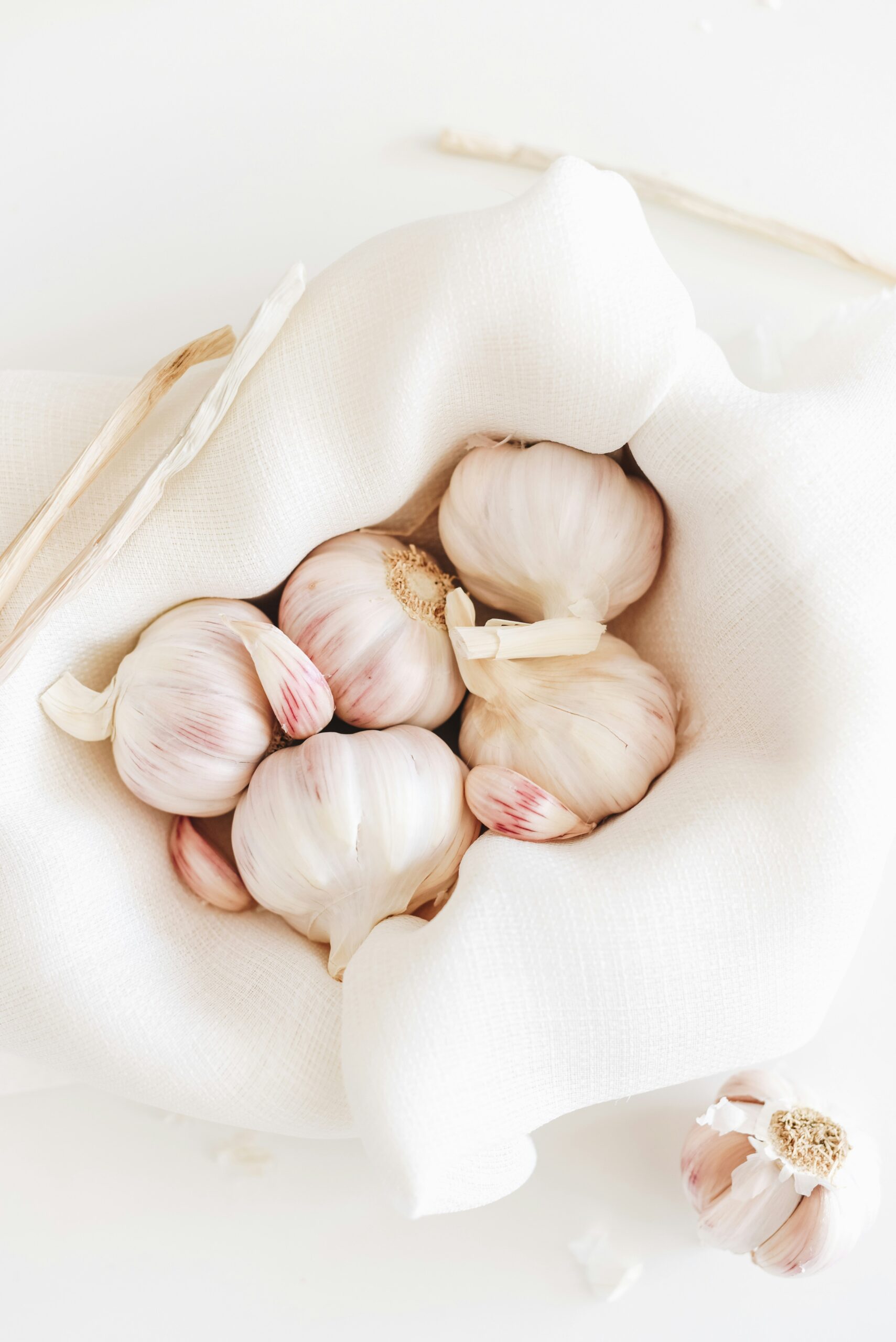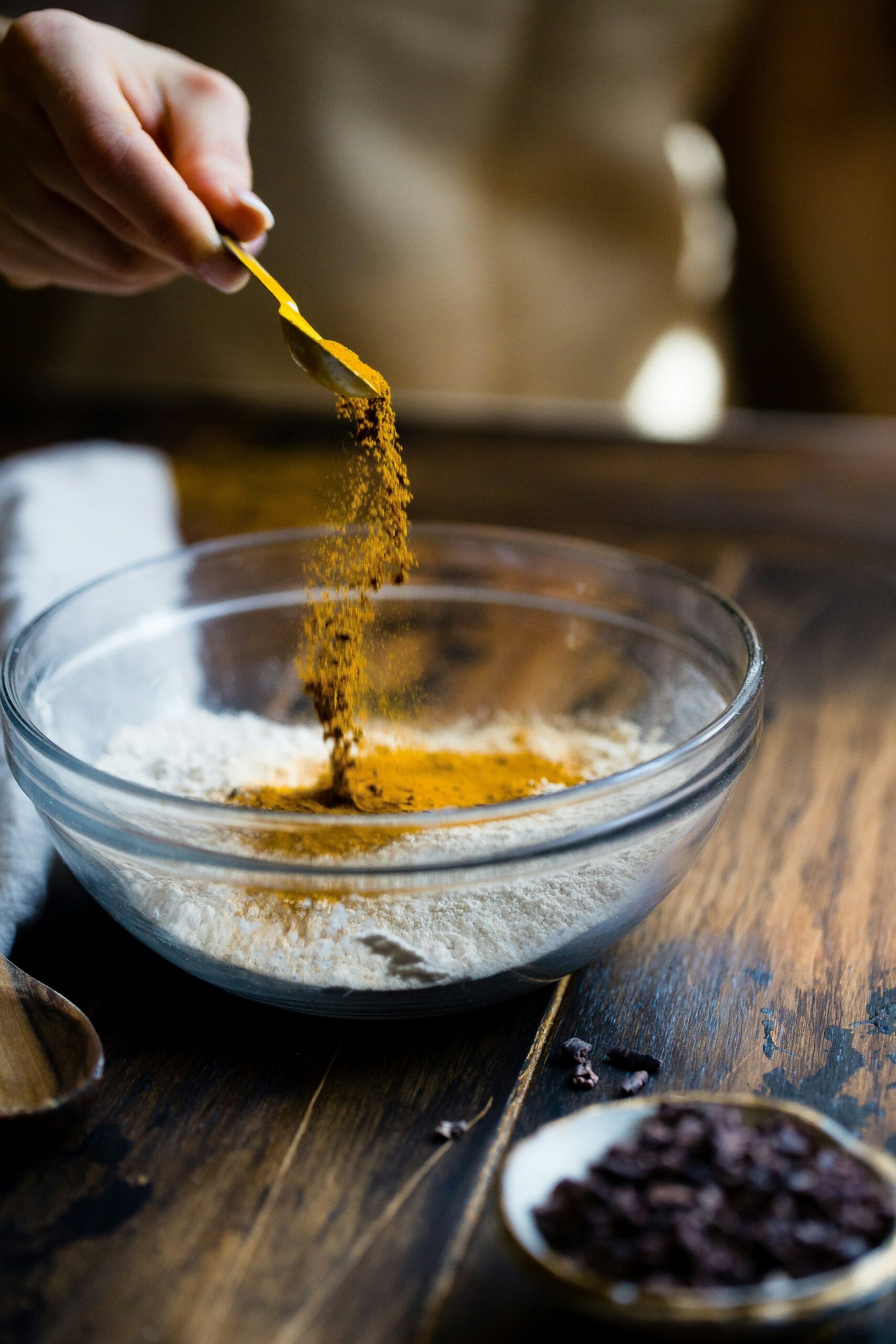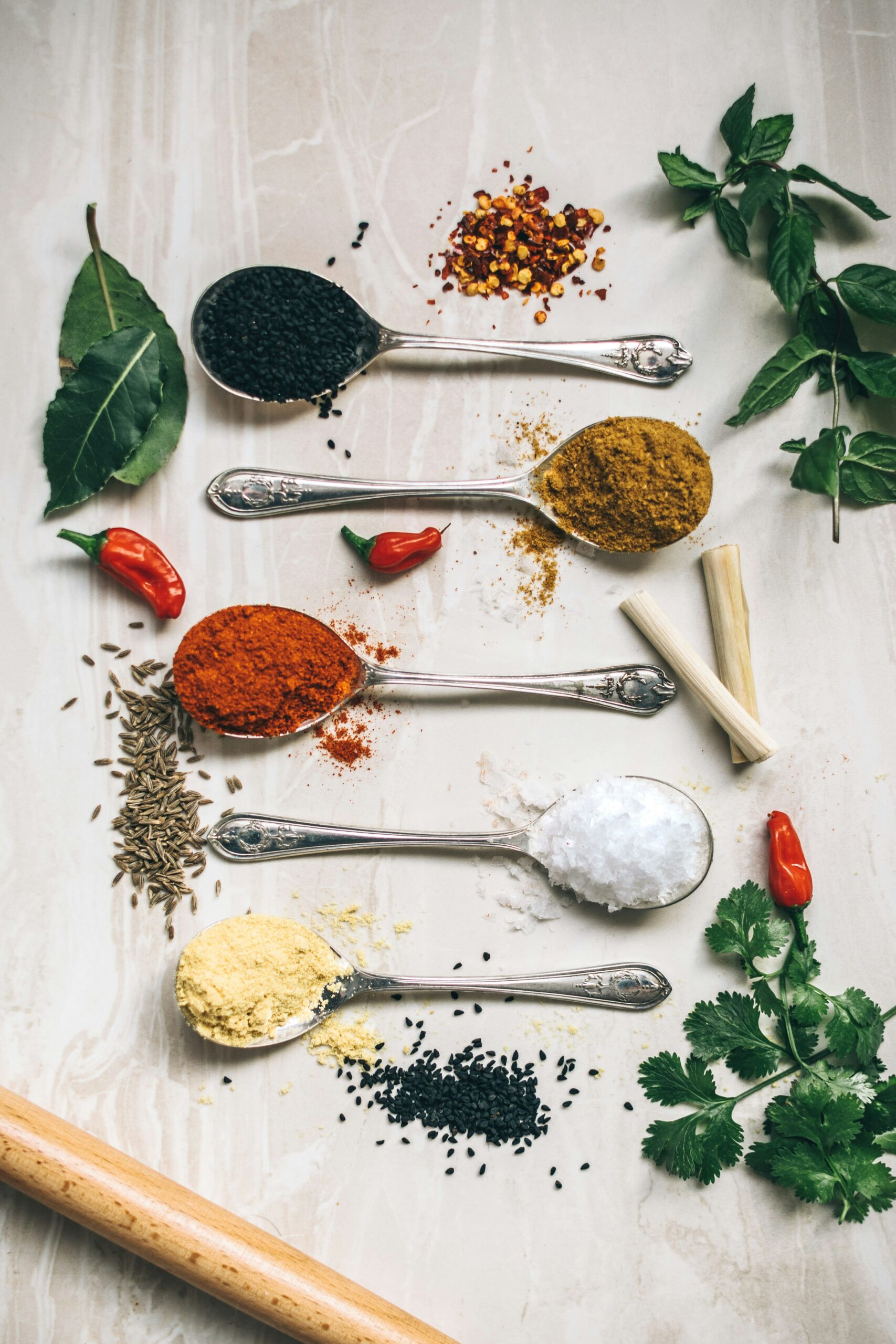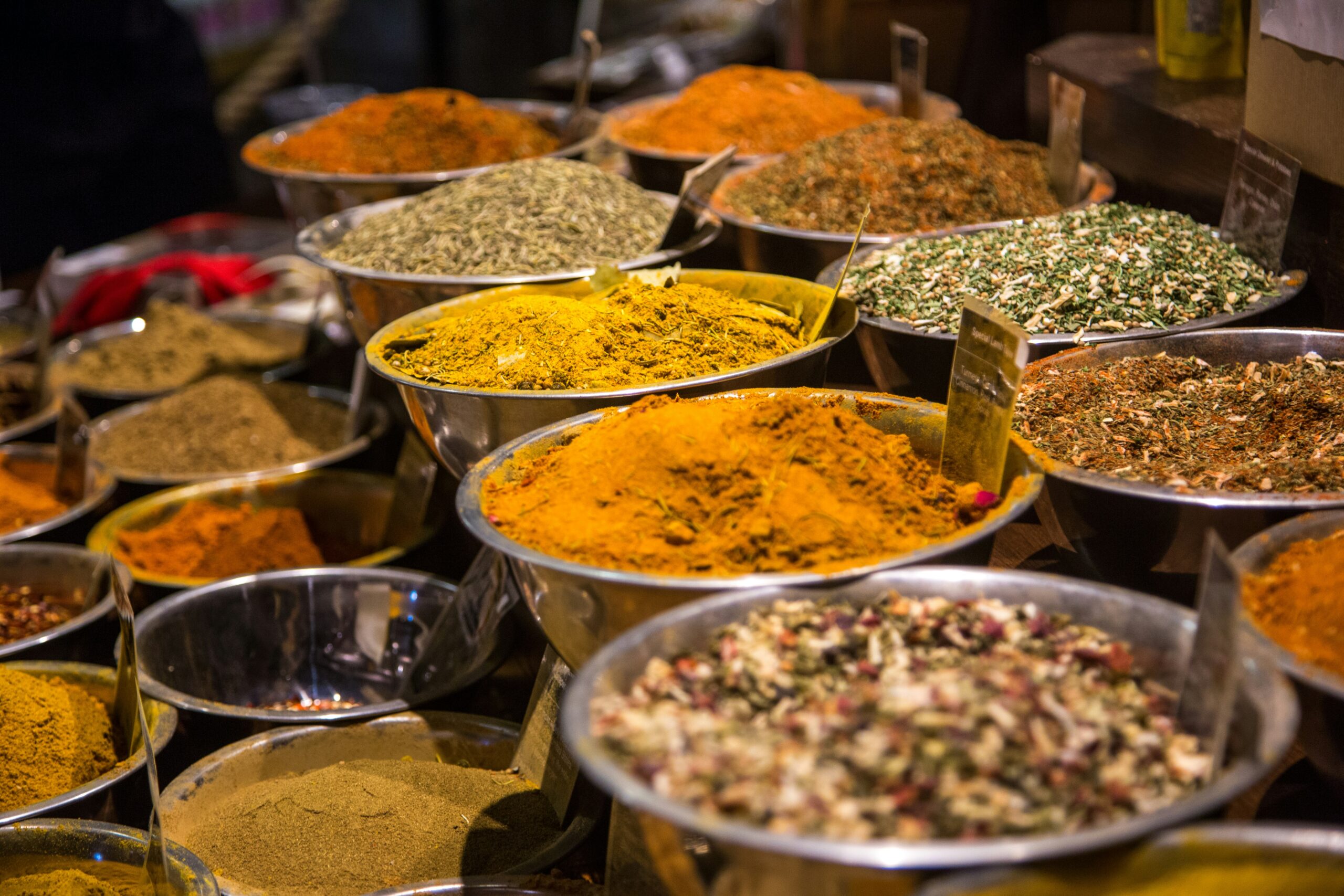When considering the spice trade, a historic industry with global reach, there’s a significant shift towards sustainable practices, particularly in eco friendly spice packaging.
Eco-friendly spice packaging has become an important factor not only in preserving the environment but also in meeting the rising consumer demand for greener options.
These sustainable packaging solutions are designed to minimize environmental impact and waste.
You’ll find that more companies are adopting materials that are compostable, recyclable, or made from renewable resources.

The essence of eco-friendly packaging lies in its ability to be repurposed or decompose without harming the environment.
This principle resonates with the global push for a zero-waste lifestyle and sustainable living.
Established and emerging brands in the spice trade now often choose eco-friendly spice packaging to align with environmental values and appeal to eco-conscious consumers.
Moreover, advancements in materials and technology are making these packaging options not only better for the planet but also cost-effective.
From biodegradable pouches to refillable glass containers, the options for preserving your herbs and spices sustainably are plentiful and ever-growing.
Key Takeaways
- Eco-friendly packaging is essential for the spice trade to lessen ecological damage.
- Advancements in technology contribute to the cost-effectiveness of sustainable packaging.
- Consumer preference is trending towards environmentally responsible packaging options.
Table of Contents
Table of Contents
Overview of Eco-Friendly Spice Packaging Materials

Eco-friendly spice packaging is vital for sustainability and reducing carbon footprints. It ensures product freshness while respecting the environment.
Let’s explore the materials that meet these criteria.
Glass Containers and Their Benefits
Glass jars have long been a favorite in eco-friendly spice packaging.
Your spices in glass containers serve multiple benefits:
- Longevity: Glass is impermeable, which means your spices are shielded from moisture and air—two factors that can degrade flavor and quality.
- Recyclability: Glass can be recycled indefinitely without loss of quality or purity. Hence, glass spice jars support a circular economy.
- Health Conscious: Unlike some plastics, glass doesn’t leach chemicals into your spices, ensuring that what you consume is as pure as possible.
Advantages of Compostable and Biodegradable Options
Moving towards compostable materials like biodegradable plastics made from corn starch or other natural materials, the environment reaps the benefits:
- Reduced Waste: These materials break down much faster compared to conventional plastics.
- Versatility: Compostable bags and containers can be as robust and protective as traditional packaging but with the added advantage of being eco-friendly.
- Lower Impact: Using compostable options can significantly lower your carbon footprint, as they require less energy to produce and dispose of.
These sustainable materials provide substantial ecological benefits without compromising on quality or freshness. Whether you choose glass bottles, metal spice tins, or compostable bags, your choice contributes to a healthier planet.
Cost-Effective Eco-Friendly Packaging Solutions

In the pursuit of sustainability, you can still find affordable and eco-friendly packaging solutions that don’t compromise on quality or function.
Economical Bulk Options
Bulk packaging is a cost-effective solution that reduces the amount of material used, thereby reducing waste.
When you purchase spices in bulk, you’re not only saving money but also minimizing the packaging materials needed.
Common bulk sizes can range from small packets that serve a household to large bags that cater to businesses, all while maintaining a zero-waste approach.
Utilizing less material means fewer resources are consumed from start to finish.
Innovations in Design and Functionality
The market’s innovative strides have introduced resilient eco-friendly packaging like resealable food packaging.
Consider using stand-up pouches or flat bottom pouches, which are not only trendy but also sustainable.
They take up less space during shipping and on your shelves, all the while being made of materials that cause less harm to the environment.
You get the best of both worlds – functional design and durability without sacrificing the carbon footprint of your packaging.
Printing and Branding on Eco-Friendly Packaging
When you choose eco-friendly packaging for your spices, you ensure that your product’s journey to the consumer’s kitchen is rooted in sustainability. This section will guide you through the printing techniques and branding strategies that maintain your commitment to the environment while effectively communicating with your audience.
Sustainable Printing Techniques
In the realm of eco-friendly printing, options such as flexo and gravure printing stand out.
These methods are not only compatible with various sustainable substrates but also operate with low emissions.
Flexo printing, known for its versatility, uses rollers to transfer inks and can utilize water-based, non-toxic inks—an ideal choice for your eco-minded branding.
Gravure printing, while often associated with high-volume production, allows for high-quality and consistent imagery, which can reflect the premium nature of your spices.
Both techniques support the use of biodegradable and compostable materials, ensuring your packaging leaves minimal environmental impact.
Branding and Consumer Communication
Branding on your packaging is the silent ambassador of your spice quality.
Utilizing QR codes can lead your customers to stories about your spices—origin, perfect pairings, and the journey towards sustainability.
This not-conventional approach resonates well with eco-conscious consumers and enhances the user experience without additional packaging waste.
Detailed artwork and clear text printed on eco-friendly materials convey the essence of your brand—high-quality products with a commitment to the planet.
Through strategic use of design and text, your eco-packaging can create a visual and ethical appeal that aligns with the values of your audience, turning your sustainable packaging into a powerful tool for both environmental responsibility and customer connection.
Compliance, Standards, and Consumer Safety

In the realm of eco-friendly spice packaging, maintaining compliance with regulations and attaining eco-certifications are vital to ensuring the safety and trust of consumers.
Ensuring Regulatory Compliance
When sourcing your spices, it’s essential to be aware of the necessary food safety standards.
These regulations are in place to protect your health and to maintain the spice’s quality.
Eco-friendly packaging must meet the same stringent requirements set by bodies like the FDA to ensure consumer safety.
This means that the materials used must not only be sustainable but also safe for contact with food products. The regulations adapt to the latest research in material safety and sustainability practices.
Certifications and Eco-Credentials
To convey the integrity of your product, acquiring eco-friendly certifications is instrumental.
Labels such as “Biodegradable“, “Compostable“, or “Recyclable” help your customers identify your commitment to sustainability.
Certifications from recognized bodies assure consumers that the products meet rigorous environmental and safety standards.
These credentials, including BPI (Biodegradable Products Institute) certification or USDA Organic labels, enhance customer trust and increase the marketability of your spices.
People often look for third-party validated eco-credentials as a quick signal of a brand’s commitment to sustainable practices.
Market Trends and Consumer Preferences

In the competitive market of spices, your choices as a consumer have started to shape the industry’s approach to packaging.
Recognizing your preference for sustainability, companies are innovating with eco-friendly packaging solutions.
Consumer Demand for Sustainable Packaging
Your increasing awareness of environmental issues is steering the market towards sustainable packaging.
You’re now considering not just the quality of the spices but also the impact of the packaging on the planet.
Because of this, there’s been a significant growth in the demand for eco-friendly spice packaging bags.
Companies are responding to your preferences, and as a result, biodegradable and compostable options are becoming more prevalent.
This shift isn’t just an environmental choice; it’s a reflection of your values as you gravitate towards brands that prioritize the earth’s well-being.
Impact on the Spice Industry
Your preference for eco-friendly options has created a ripple effect in the spice industry.
With the growing need for sustainability, spice packaging is undergoing a transformation. The spice packaging bags you see on shelves are more likely to be made of recyclable or plant-based materials, which diminish the waste footprint.
Your choice is compelling spice brands to think beyond traditional packaging methods and to innovate. This competitive market landscape is pushing brands to not only provide high-quality spices but also to package them responsibly, ensuring both the quality of their product and the health of the environment.
Final Thoughts

Eco-friendly spice packaging is more than just a trend; it’s a vital step towards preserving our planet. You are the key to its success. With your preference for sustainable options, manufacturers are turning to materials that lessen ecological damage.
Choose biodegradable containers over plastic to keep oceans clean and landfills less cluttered. Recycled materials and reusable jars make a significant difference. Innovative packaging isn’t only about reducing waste; it’s about ensuring high-quality spices without compromising the Earth’s wellbeing.
Meeting consumer demands for sustainability isn’t just good ethics—it’s smart business. Consumers, like you, seek brands that match their values. Embrace this change. Opt for brands that contribute to a sustainable future with eco-conscious packaging.
Remember, small changes lead to a big impact. Support eco-friendly spice packaging for a healthier environment. Your choices matter—make them count for our shared home. Choosing eco-friendly spice packaging is a significant step toward sustainability and aligns with the increasing consumer demand for greener options.
The industry is witnessing a shift from traditional packaging to innovative solutions that minimize environmental impact and waste.
Affordable and High-Quality Options
Affordable prices and high-quality options are now available for eco-friendly packaging. Companies have developed solutions such as spice powder filling machines and oz spice bottles, which cater to the need for both efficiency and sustainability.
Variety of Materials and Sizes
Eco-friendly spice packaging involves a variety of materials and sizes to suit different needs. Glass storage jars and bamboo lids offer longevity and recyclability, making them ideal for preserving the integrity of spice blends and herb packaging. These materials protect against external factors like moisture and air, ensuring a longer shelf life for the spices.
Paper-Based and Compostable Options
Paper-based packaging and compostable bags are becoming popular due to their ability to break down naturally without harming the environment. These materials are suitable for various bag sizes and types, including flat pouches and food pouch bags. They are an excellent way to package herbs and spices sustainably.
Advancements in Printing Techniques
Advancements in printing techniques and artwork of the packaging enhance the visual appeal and functionality of eco-friendly spice containers. Brands are using printing methods that employ non-toxic inks and sustainable substrates. This not only improves the material structure of the packaging but also allows for detailed and attractive designs.
Convenience and Traceability Features
Tear notch and QR code features add convenience and traceability, enhancing the user experience. These features ensure that consumers can easily access product information and make informed purchasing decisions.
Extended Applications
The application of eco-friendly packaging extends beyond spices to include other food items, pet food bags, and even products in the chemical industries. This versatility underscores the potential for a broader impact on reducing single-use plastics and promoting sustainable practices.
Environmental and Economic Benefits
By choosing eco-friendly spice packaging, consumers contribute to a reduction in post-consumer waste and support the use of renewable raw materials. This choice not only benefits the environment, but also aligns with the best options for high-quality and durable packaging.
Express fees and shipping boxes are optimized to reduce carbon footprints, ensuring that eco-friendly packaging is also cost-effective and efficient. The emphasis on sustainability is reflected in the range of sizes and designs available, catering to both small-scale and large-scale needs.
Summary
Eco-friendly spice packaging represents a great investment in the future of sustainable living. It encompasses innovative solutions that are both practical and environmentally responsible, offering long-term benefits for consumers and the planet. Embracing these options is a small step towards a big impact, ensuring a healthier and more sustainable world for generations to come.
Frequently Asked Questions

Eco-friendly spice packaging is growing in popularity as you seek to align your kitchen and business practices with environmental sustainability. Here’s what you need to know about sustainable spice packaging solutions.
What are some sustainable materials used for spice packaging?
Glass jars are a popular choice for spices due to their non-toxic nature and ability to be reused and recycled indefinitely.
Bioplastics, made from renewable materials like cornstarch, have also emerged as a sustainable alternative to conventional plastics.
Packaging made from recycled paper or cardboard offers a biodegradable option that can minimize environmental impact.
How can I find suppliers offering eco-friendly options for spice containers?
Start by looking for suppliers who specialize in eco-friendly packaging. You can often find them via online searches or by seeking recommendations from culinary forums.
Check for certifications like FSC (Forest Stewardship Council) or bioplastics marks that validate their eco-friendly claims. Green Earth Packaging and Stonesmentor are examples of suppliers that prioritize sustainability.
In what ways can packaging spices be both eco-friendly and cost-effective for businesses?
Bulk purchasing often leads to reduced costs in your packaging choices. Opting for minimalist designs saves on materials and reduces waste.
Also, consider lightweight materials that are eco-friendly, as they can lower shipping costs.
What are innovative designs for herb and spice packaging that prioritize the environment?
Designs that reduce unnecessary space and materials optimize the use of resources.
Consider packaging that can serve multiple functions or be refilled to extend its lifecycle. Look for designs that incorporate recycled materials for a lesser environmental footprint.
How do biodegradable and compostable packaging materials compare for spice packaging?
Compostable materials break down into non-toxic components when composted, adding value to the environmental cycle, while biodegradable materials are simply broken down by microbes over time.
Both reduce the amount of waste that ends up in landfills compared to traditional plastics.
Could you suggest ways to package spices in bulk while still being mindful of sustainability?
One way is to use large, reusable containers made of sustainable materials. These containers can be refilled from bulk bins.
Another approach is to offer a container return program. With this program, customers can bring back packaging for refills, thus supporting a circular economy.

I’m Chris, a passionate advocate for sustainability, sharing my journey and tips from our vibrant family farm. With a background rooted in zero-waste living and a heart committed to eco-friendly practices, I aim to empower others through my blog. Each post is a blend of personal experiences or a question I have once pondered, and practical advice for those looking to make sustainable choices in their daily lives. Join me in making every step a greener one, as we explore the joys and challenges of living sustainably together.